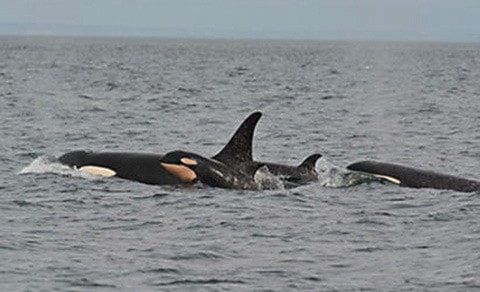Erin Haluschak
Record Staff
The spring season has been particularly bountiful for the Southern Resident Killer Whales, as another new baby has been born into the J pod in the waters around Vancouver Island and Washington State.
J52 is the newest member of the pod and was seen mid-day March 30 near Active Pass, B.C. by whale watchers, explained Howard Garrett, co-director of the Orca Network, based in Freeland, WA.
“There must have been some exciting meet ups,” he added with a laugh. “We were all pretty devastated when in December (when J-32/Rhapsody was found near Bates Beach) … but now we’re energized and it’s a good indication we’ve had four babies in the past two and a half years.”
While Garrett noted the population remains in a “very serious situation,” the latest birth does raise hope.
“We’ve got to look at the long term and focus on how we can provide for them in years to come,” he explained, and added one focus is the removal of dams on the lower Snake River which has blocked the passage of salmon for 40 years.
The birth brings the total number of whales in J pod to 27, and the estimated total number of Southern Resident Killer Whales to 81 (which includes K and L pods).
Garrett said mortality for baby orcas in their first year is very high - between 30 to 50 per cent of newborns don’t make it to their first birthday.
If they do survive, their mortality rate drops significantly, especially as they enter their reproductive years, he added.
“Unlike any other mammals outside of humans, female orcas are the only mammals that have menopause. They can live until 80 or 90 - very equivalent to humans. It adds to the theory that the older matriarchs have a very important role to play in passing on the traditions to others in the pod.”
Garrett noted while the pod changed its pattern in 2013 and was rarely seen, last year was a relatively normal year for spotting the whales, which was mostly near the San Juan Islands and the Strait of Georgia, and as far north as the Comox Valley and Campbell River.
photos@comoxvalleyrecord.com
